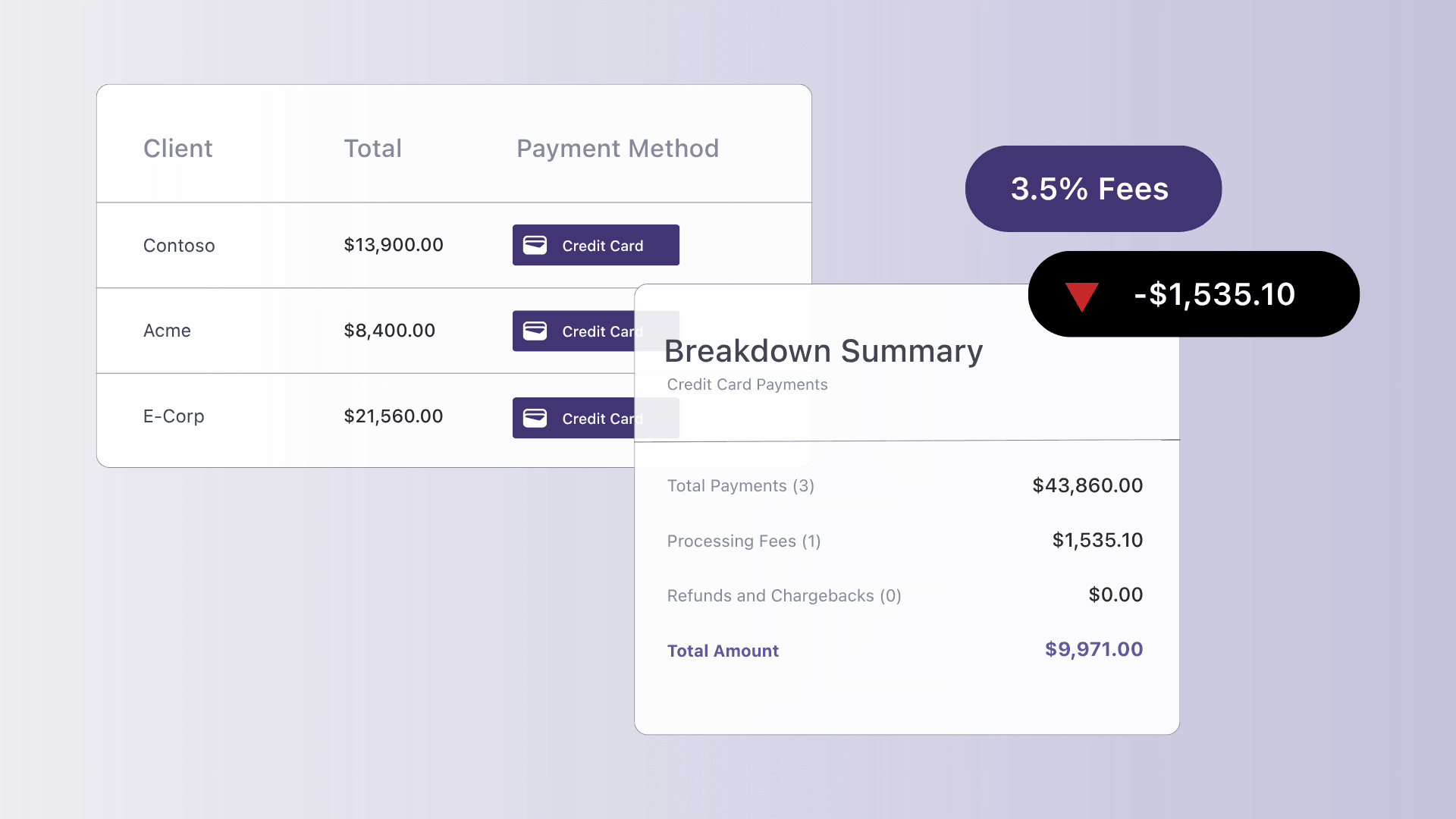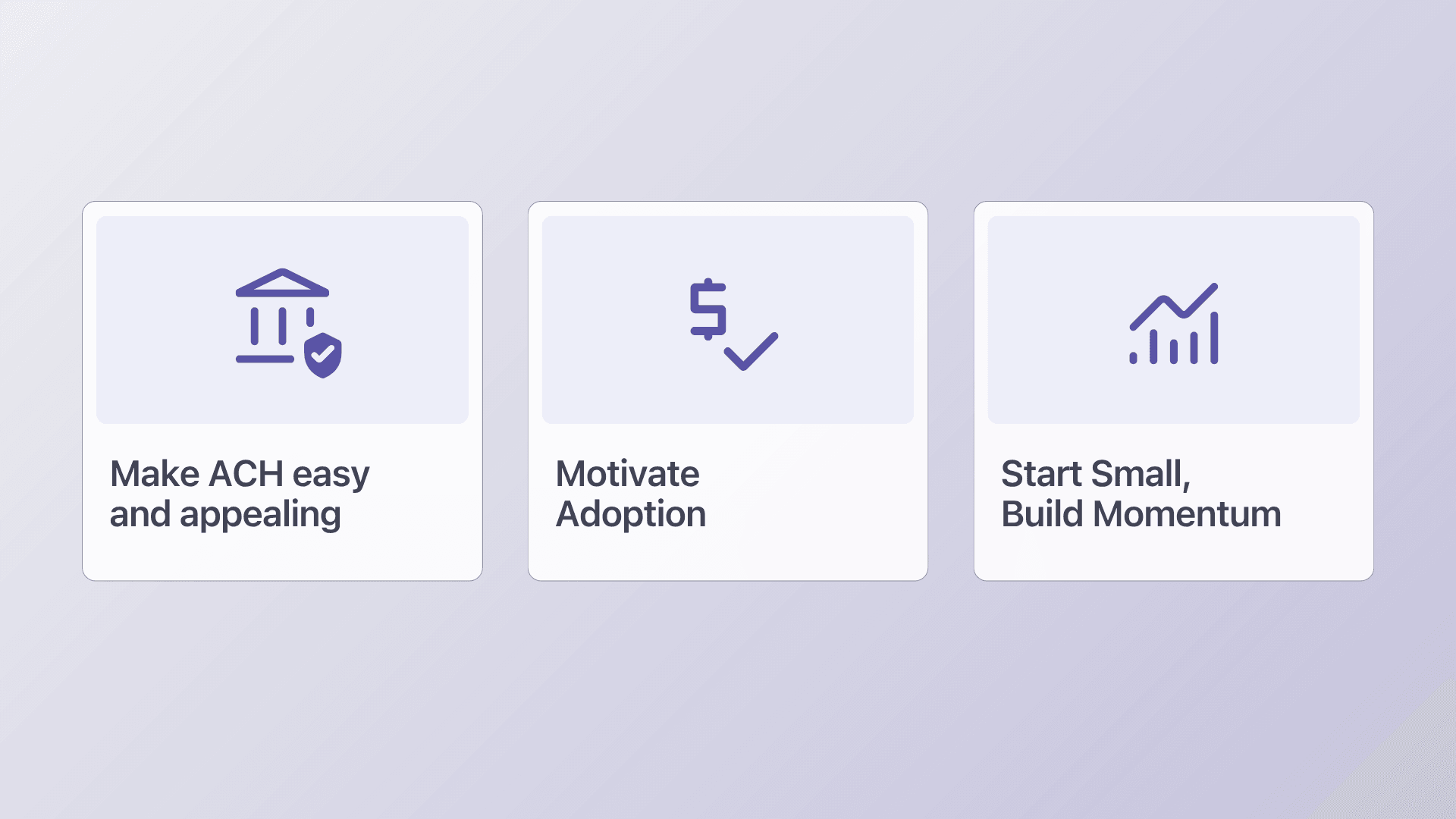MSP billing may not be the flashiest part of running an MSP, but it’s one of the most revealing. The way you collect revenue reveals a great deal about your efficiency, maturity, and financial control. Yet for many growing providers, outdated payment habits, especially heavy reliance on credit cards, silently drain profits in ways that rarely show up until the year-end review. The truth is, even small fees add up fast. And in an industry where every margin point matters, how your clients pay can be just as important as the services you deliver.
Here’s what that looks like in real numbers.
A Cost You Don’t See (Until It Hurts)
When I recently reviewed the books of a mid-sized MSP, one number stopped me cold.
Right there in the expense column: $17,642 in annual payment processing fees.
The owner stared at the screen for a few seconds before saying quietly, “That’s one full technician’s salary.”
And he was right. That’s a new hire—a marketing campaign. A chunk of profit, gone. Not from bad contracts or poor client retention, but from something more invisible: how his clients pay.
This isn’t a one-off story. Across the MSP industry, credit card fees quietly erode profits every month. They’re familiar, frictionless, and, if we’re being honest, mostly unexamined.
The thing is, what feels familiar isn’t always what’s sustainable.
In the world of MSP billing, where every margin point matters, your payment method isn’t just an operational choice, it’s a financial strategy. And for most MSPs, the smarter move isn’t plastic. It’s ACH.
Let’s unpack why.
The Hidden Cost of Credit Cards in MSP Billing
Credit cards make it easy for clients to pay and even easier for you to lose money without noticing.
Take a look at your payment mix. If even half of your clients pay by credit card, and your annual billing volume is $600K, you’re probably handing $15,000–$18,000 straight to the processors every year.
That’s money you’ll never see again.
And the bigger your MSP grows, the more painful it gets. Credit card fees scale with your success, 2.5% on $1M is $25,000 gone.
But that’s just the start. Beyond the obvious transaction costs, there’s a cascade of hidden costs that weigh down your billing team:
- Manual reconciliation between your PSA and accounting software.
- Failed payments from expired cards or incorrect details.
- Chargebacks that tie up your cash flow for weeks.
- Merchant fees for PCI compliance, monthly gateways, and batch processing.
Each one adds friction, confusion, and delay. You’re paying not just in fees but also in time, labor, and predictability.
And as your MSP grows, these inefficiencies multiply. Every new client who pays by card compounds the problem, creating more admin work, more reconciliation errors, and less clarity over your cash flow.
So while credit cards might look convenient, they come with an invisible tax, a tax that scales with your ambition.

Why ACH Is the Smarter Choice for MSP Billing
For years, ACH (Automated Clearing House) payments have been dismissed as the “boring” option.
But boring doesn’t mean bad. In fact, boring is often what saves you money.
ACH is the infrastructure behind payroll, vendor payments, and tax refunds, the system businesses trust for billions of transactions every year. According to Nacha, over 30 billion ACH payments were processed in 2023 alone.
That’s not a fad. That’s maturity.
Here’s why ACH is tailor-made for MSP billing:
- It’s dramatically cheaper.
- Credit card fees average 2.5–3.5%. ACH fees? Often less than 1%, and with platforms like Alternative Payments, they’re free.
- It’s reliable.
- ACH payments don’t expire like cards do. No re-entry, no “declined” messages, and no waiting for updates.
- It’s secure.
- ACH transactions move through regulated bank-to-bank networks, encrypted end to end, and backed by the same systems that power direct deposits.
- It’s predictable.
- No card type surcharges. No interchange fluctuations. Just flat, simple costs.
For your clients, ACH is easier too: set it once, forget it forever. No check-writing, no stamps, no “oops, my card changed.”
For your MSP, it’s peace of mind, smoother cash flow, and a meaningful bump in your margins.
So if ACH wins on cost, reliability, and convenience, why do so many MSPs still stick to credit cards?
The MSP’s Dilemma: Convenience vs. Control
Here’s the truth: clients like paying by card. It’s familiar. It earns them points. It feels modern.
And as an MSP, you want to be client-friendly. You don’t want to rock the boat.
But here’s the trap, the more you prioritize client convenience, the more you sacrifice business control. That’s not sustainable.
Smart MSP billing isn’t about choosing what’s easiest today, it’s about designing processes that scale profitably tomorrow.
When you let clients pick whatever payment method they prefer, you’re not being flexible, you’re being reactive. You’re letting their habits dictate your margins.
Mature MSPs flip that script. They treat billing like every other part of their business: standardized, automated, and strategically optimized.
That means taking a closer look at which payment methods truly support your long-term goals, and guiding clients toward the ones that do.
Handling Client Objections (Without Losing Trust)
Even when you’ve made a strong case for ACH, some clients will hesitate, and that’s normal.
People are naturally wary of changing how they pay. But most objections aren’t dealbreakers, they’re just questions waiting for better answers.
Here are the big ones you’ll hear, and how to handle them with confidence and empathy:
“But I get points on my credit card.”
Absolutely, you do. But those points aren’t free. They’re paid for by the 2.5–3% fee that comes out of our end. By paying via ACH, you help us keep costs (and prices) stable for everyone.
“Is ACH secure?”
Yes. ACH runs on the same network used for direct deposit and IRS tax refunds, is fully encrypted, is highly regulated, and is trusted by every major bank.
“What if there’s an error?”
ACH gives both sides protection. There’s a smaller dispute window than with credit cards, but that’s actually a benefit, it reduces fraud, chargebacks, and long-term cash flow surprises.
“I just prefer using my card.”
Totally fair. But once you’ve tried ACH, you’ll see it’s faster and more reliable, with no expiration dates, no declines, and no hassle. We’ll even help you set it up so it’s completely hands-off.
The goal isn’t to “convince” your clients. It’s to educate, empathize, and guide.
When clients feel heard and supported, they’re far more likely to follow your lead, especially when you make the change feel like an upgrade, not a sacrifice.
How to Transition Clients from Credit Cards to ACH
So you’ve made your case. You’ve explained the numbers, addressed the security concerns, and shown how ACH keeps both sides happier in the long run.
Now comes the real challenge: getting clients to actually switch.
This is where most MSPs stumble, not because the logic isn’t sound, but because change feels like work. Clients are creatures of habit. If paying by card has worked for years, why bother doing it differently?
The trick is to make switching to ACH feel like a favor, not a chore.
Here’s how top-performing MSPs are doing it:
- Make ACH the default.
- In your payment portal or invoice template, position ACH as the recommended (or pre-selected) method. The fewer clients have to think about it, the higher the adoption rate.
- Offer a small incentive.
- Even a 1–2% discount for ACH, or a transparent “credit card processing fee”, can shift perception quickly. You’re not punishing card users; you’re rewarding those who help lower costs for everyone.
- Keep the setup simple.
- One link. One click. Done. The fewer fields and steps, the better. Consider integrating ACH setup into your onboarding process for new clients so it becomes part of your MSP billing flow from day one.
- Reinforce the value.
- Include a short line on invoices or onboarding docs:
“Paying via ACH helps us reduce processing costs, so we can keep your service rates competitive.” It’s subtle but powerful.
- Include a short line on invoices or onboarding docs:
- Have the conversation.
- If a client hesitates, just ask:
“What’s holding you back from switching to ACH?” Then listen. Most of the time, you’ll uncover a simple concern, something easy to fix once it’s voiced.
- If a client hesitates, just ask:
The bottom line? Don’t overcomplicate the process. You don’t need to convert every client overnight. Start with the ones who already trust you, refine your process, and let your success stories do the talking.

Strategic Benefits Beyond the Fees
Let’s go a step further, because the advantages of ACH go beyond just saving money.
When you make ACH your MSP billing standard, you’re not just cutting costs; you’re building operational predictability and financial resilience.
Here’s what that means in practice:
- Stronger cash flow forecasting.
- With ACH, payments clear faster and more consistently. You know exactly when funds will hit your account—no surprises, no delays.
- Reduced churn from failed payments.
- Expired credit cards are one of the top causes of accidental service interruptions. ACH eliminates that variable.
- Cleaner integration with accounting systems.
- ACH transactions sync more reliably with PSA and accounting tools, reducing reconciliation errors and wasted admin hours.
- Improved client relationships.
- When billing runs smoothly, your team spends less time chasing invoices and more time building client trust.
In short, ACH isn’t just about reducing fees. It’s about designing a billing ecosystem that supports scale, professionalism, and long-term stability.
The Leadership Mindset: Billing as a Trust Signal
Here’s a truth most MSPs overlook: how you bill says a lot about how you run your business.
When your billing process is automated, predictable, and easy to navigate, clients feel it. It sends a signal of competence, organization, and trustworthiness.
And that’s where ACH shines. It’s not just a payment method, it’s part of your brand promise. Think about it. Would you rather your clients associate billing with friction (emails, failed payments, late fees) or with reliability (autopay, accuracy, and clarity)?
Leaders in the MSP space understand this connection. They don’t view ACH as a technical upgrade, they view it as a strategic leadership decision.
Because when you run a tighter ship behind the scenes, clients notice.
The Alternative Payments Way
This is where the switch gets easy.
At Alternative Payments, we’ve seen firsthand how simple, secure ACH adoption transforms MSP billing from reactive collections to proactive cash flow management.
Our approach is built on three simple ideas:
Simplicity. One link, one click, one setup, no friction.
Flexibility. Incentives, automation, and full transparency.
Support. Hands-on help to make the transition effortless for both you and your clients.
We help you make ACH the default, not through pressure, but through clarity. And if you’re not ready to overhaul your billing tools just yet? That’s fine too.
We’ll still help you run the numbers, no pitch, no pressure, so you can see exactly how much margin you’re leaving on the table with card payments.
Because once you see the difference, the next step becomes obvious.
Small Shifts, Big Wins
Here’s what it all comes down to: This isn’t about eliminating credit cards. It’s about rebalancing your payment mix so your margins work for you, not against you.
It’s about turning billing from a backend headache into a strategic advantage.
And most importantly, it’s about building a business that runs smoother, scales smarter, and communicates professionalism in every transaction.
When you lead your clients toward smarter payment habits, you’re not just saving fees. You’re modeling the kind of clarity, efficiency, and foresight that defines a truly modern MSP.
Start small. Run the numbers. Make one shift at a time.
The results? Predictable cash flow. Healthier margins. Happier clients.
Because in MSP Billing, every small improvement ripples outward to your team, your clients, and your bottom line.

